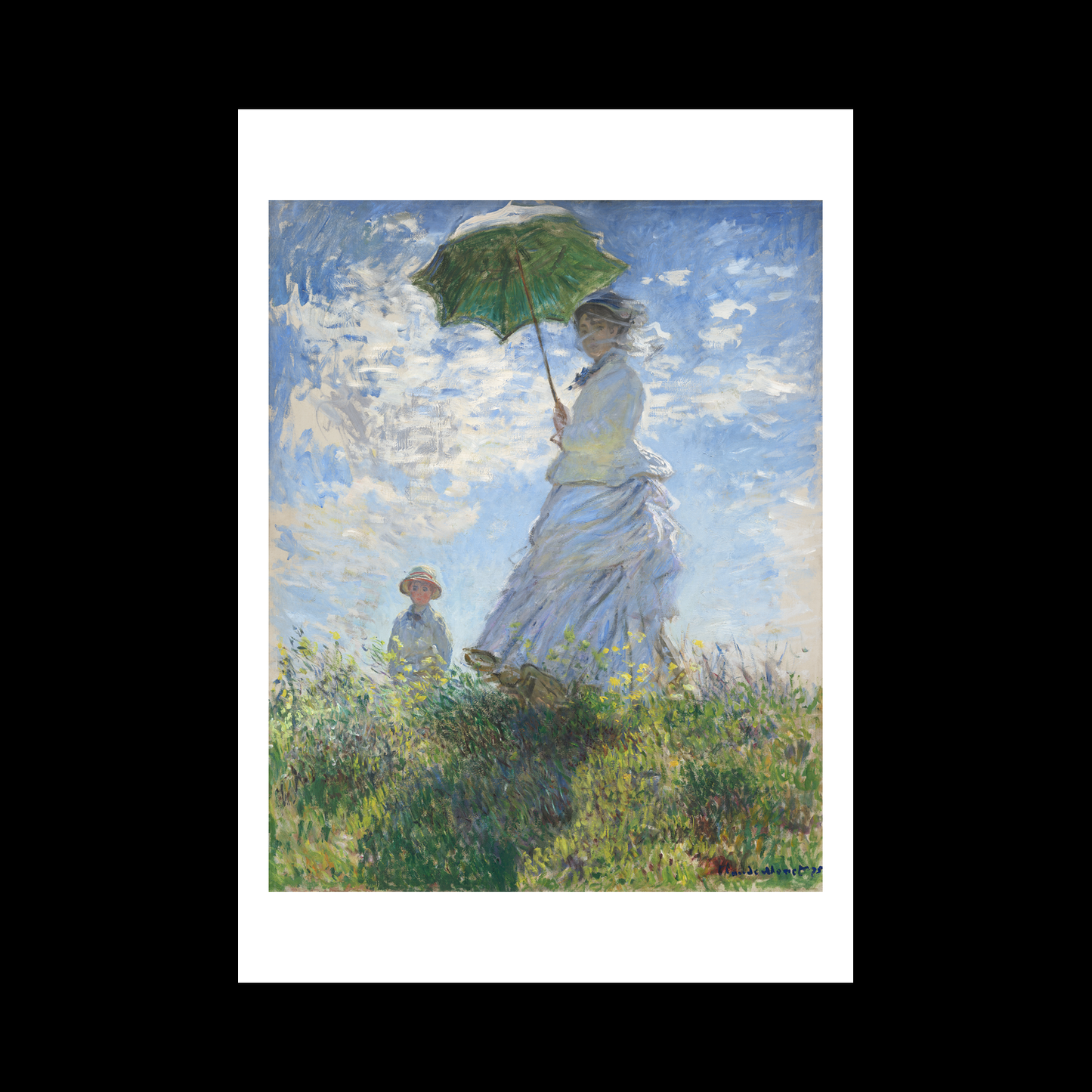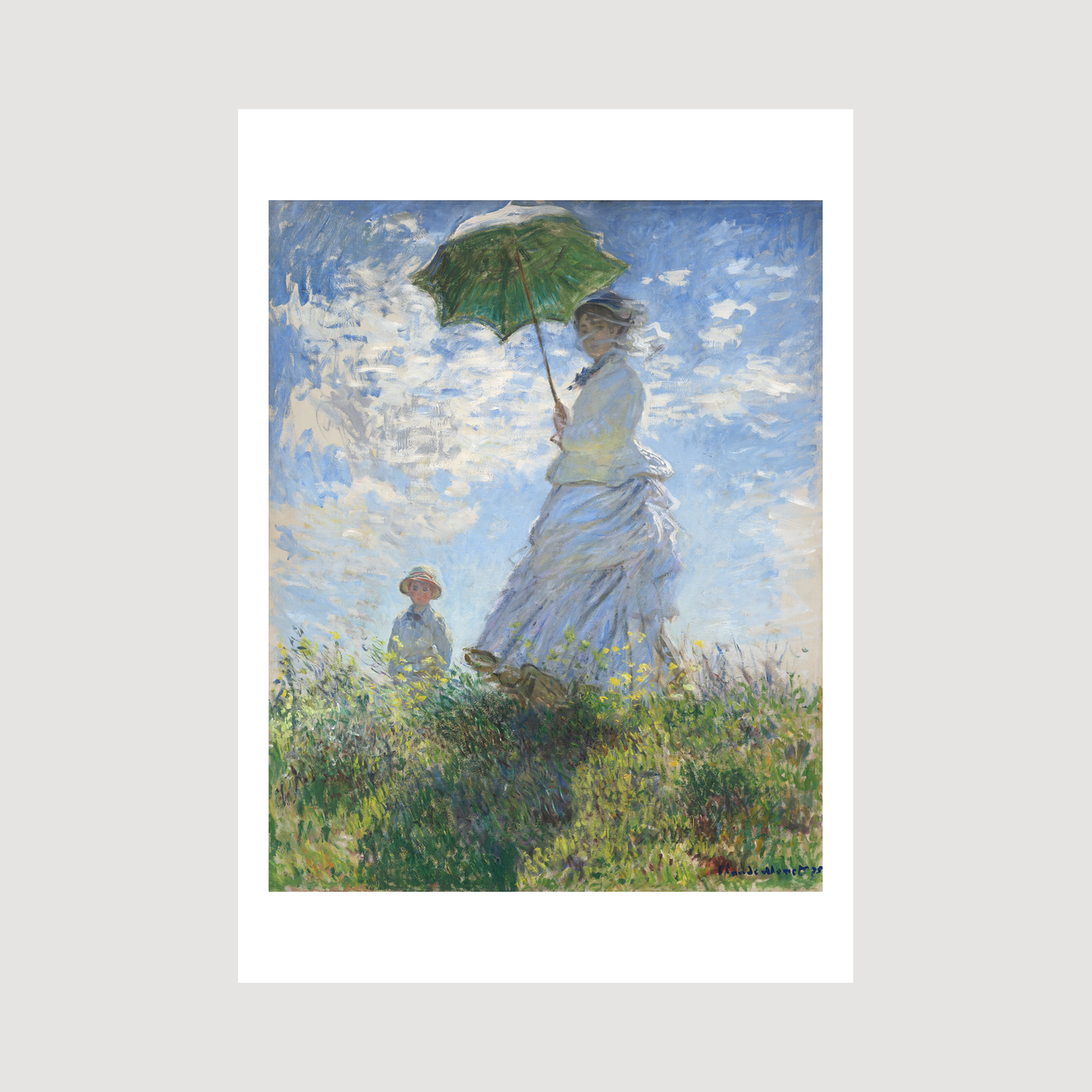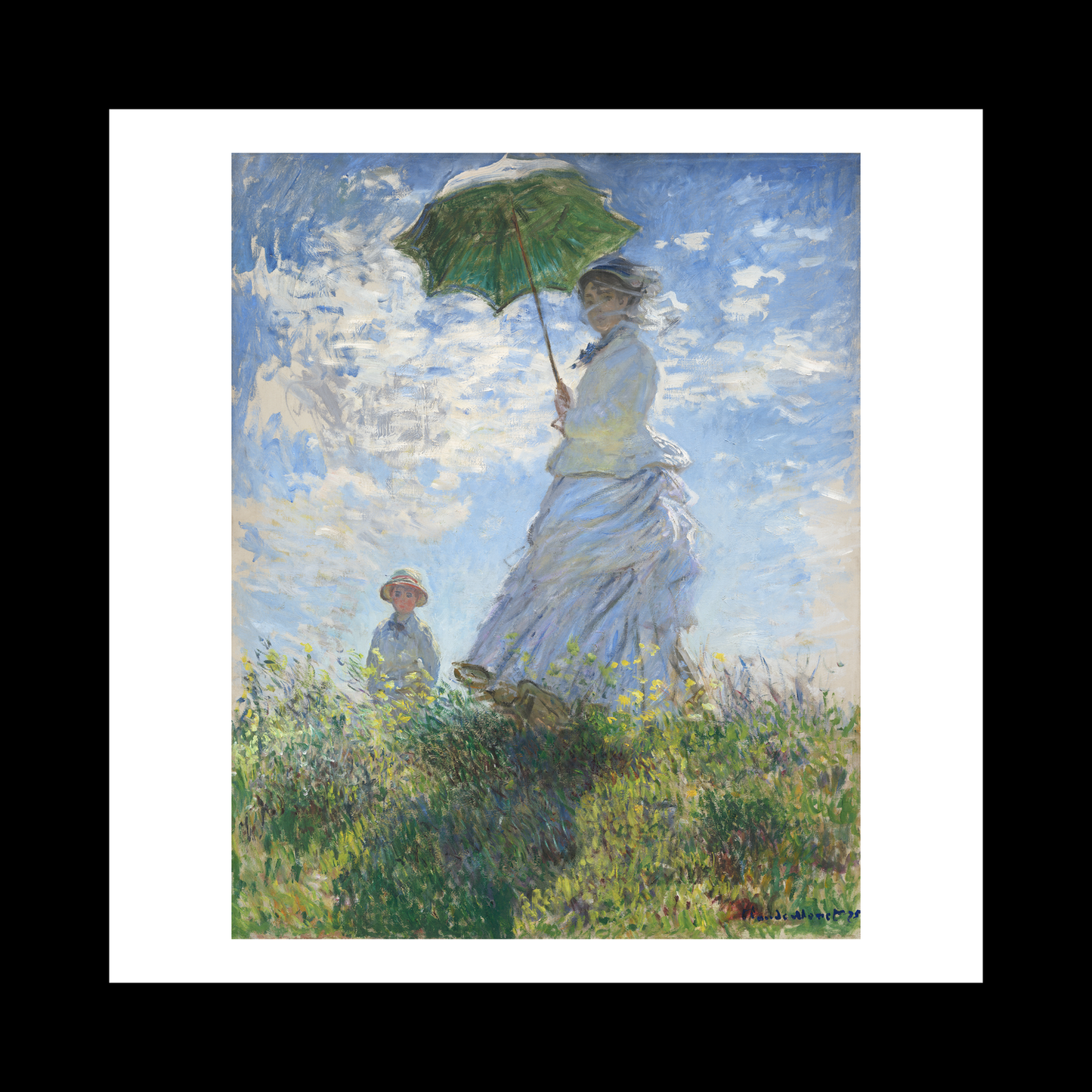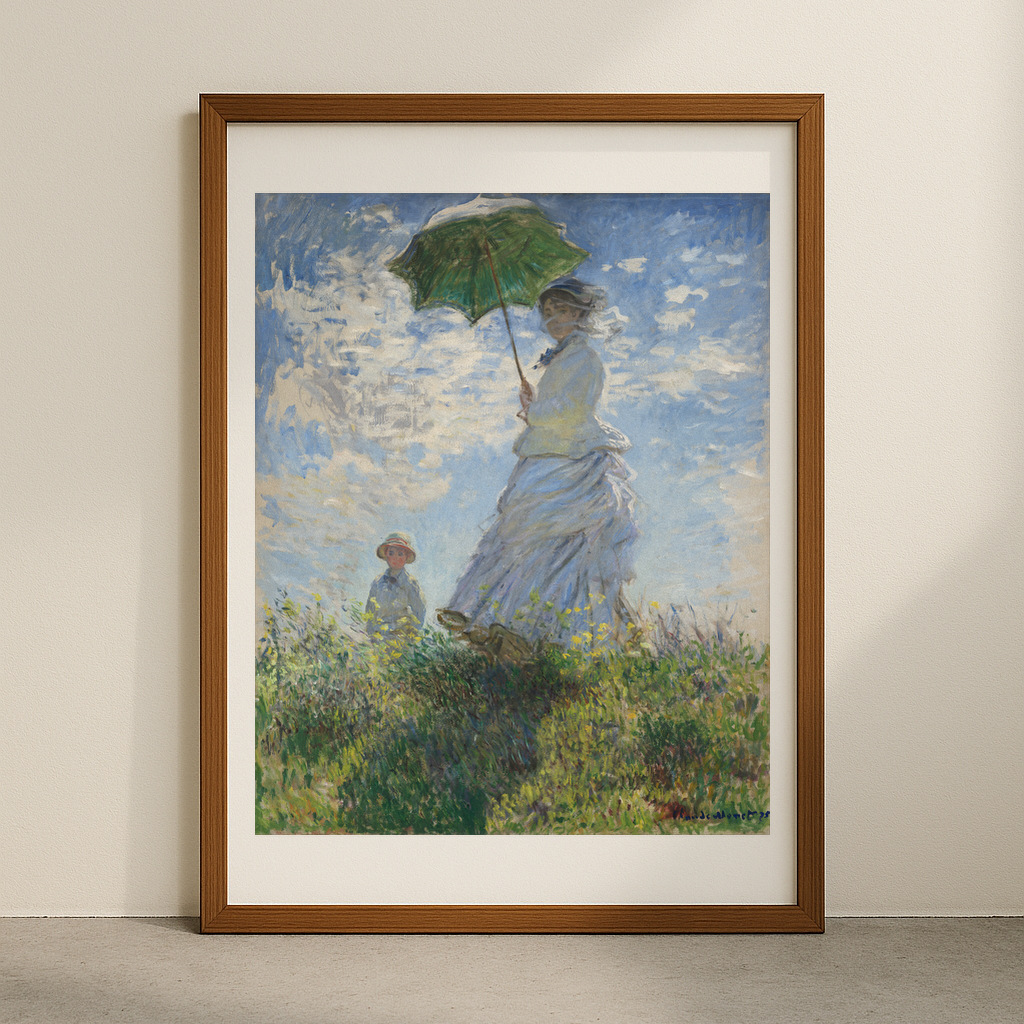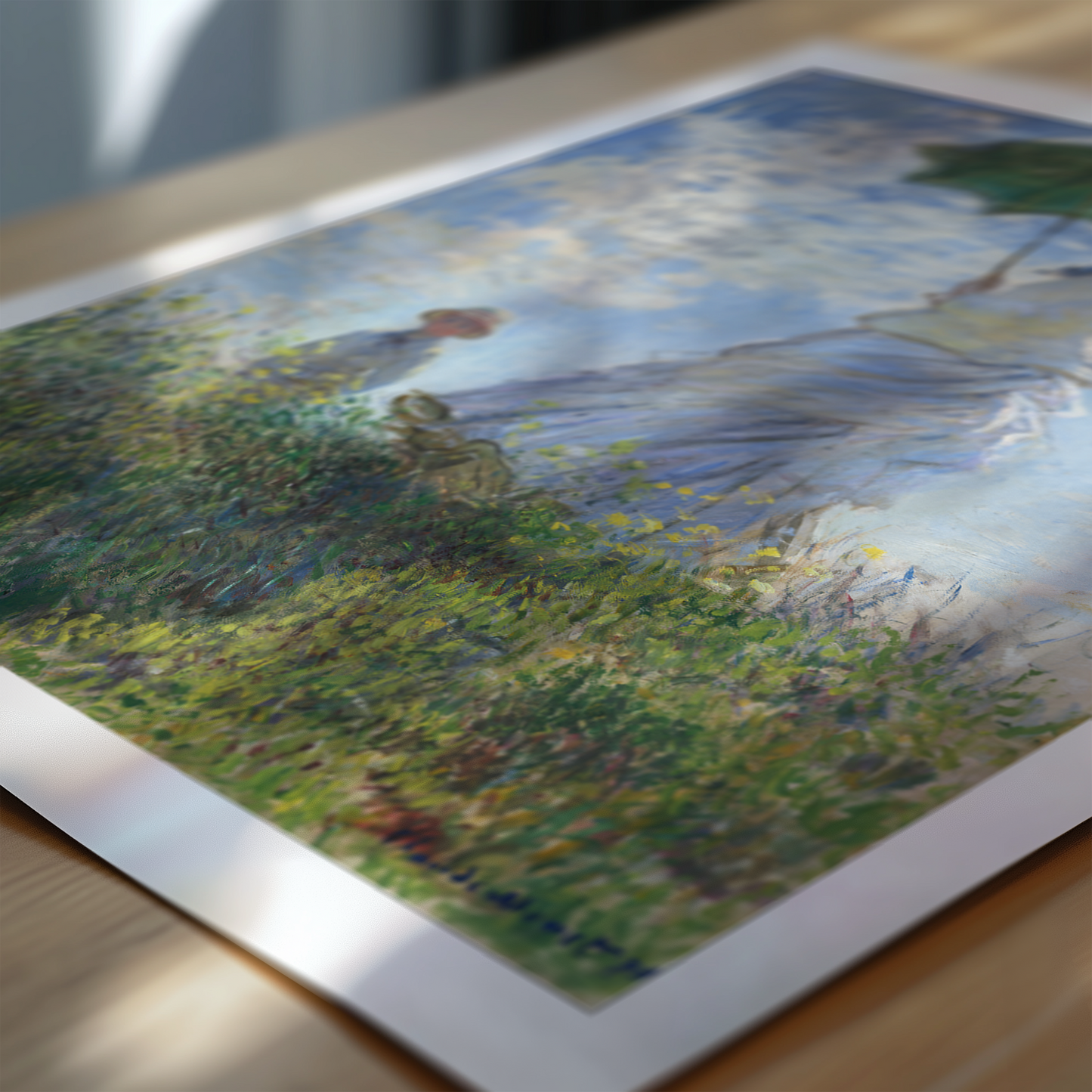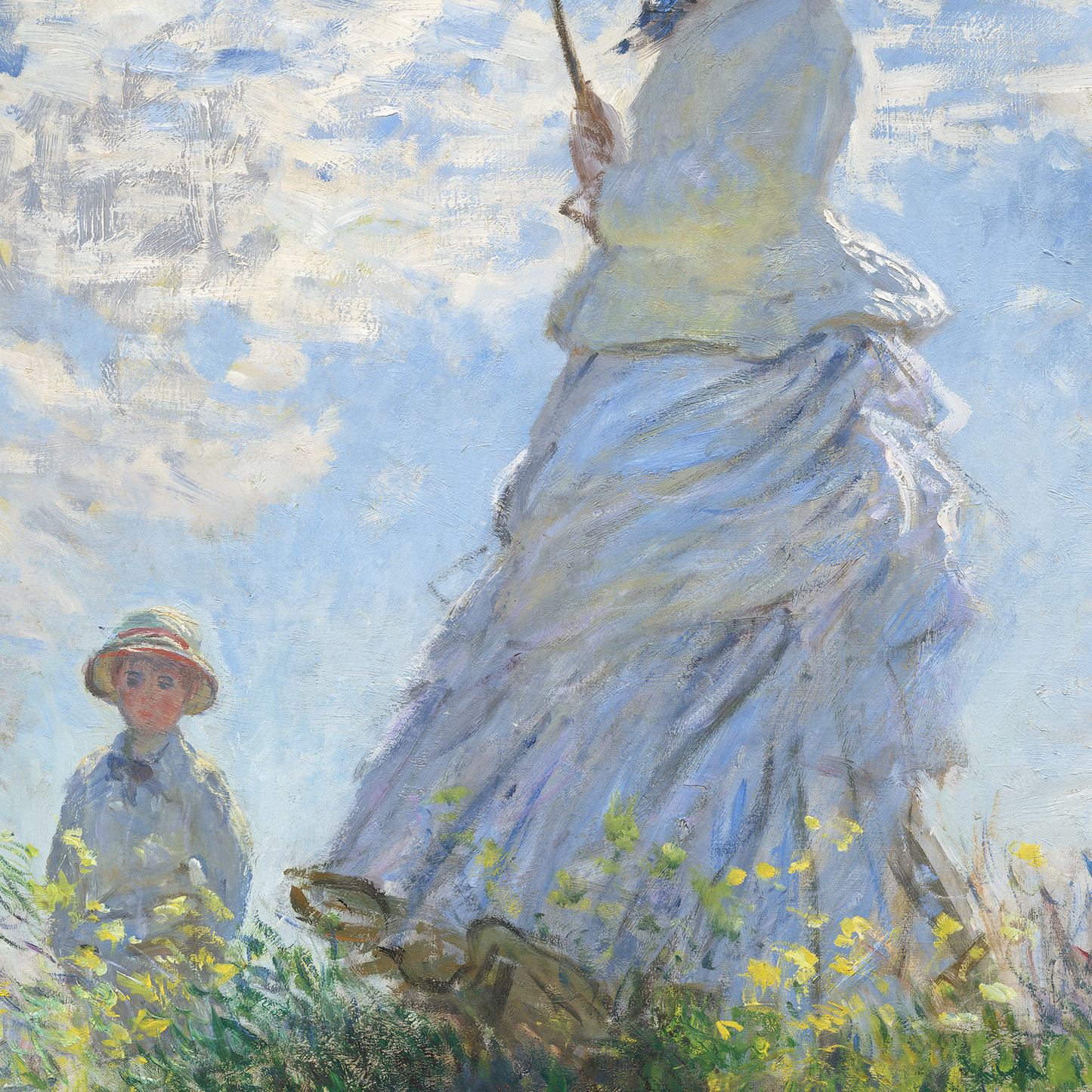1
/
of
6
Madame Monet and Her Son (1875)
Madame Monet and Her Son (1875)
Regular price
£12.45 GBP
Regular price
Sale price
£12.45 GBP
Taxes included.
Quantity
Couldn't load pickup availability
"Woman with a Parasol - Madame Monet and Her Son" (1875) captures Claude Monet's wife Camille and their son Jean in a spontaneous, sun-drenched moment. The painting exemplifies Monet's mastery of Impressionism, with swift, visible brushstrokes creating a sense of movement in the billowing dress and clouds, while capturing the fleeting effects of natural light.
Painted outdoors in Argenteuil, the work showcases Monet's innovative approach to perspective, positioning the figures against a brilliant blue sky from a low vantage point. This technique creates a striking monumentality, with Camille appearing almost heroic as she gazes down at the viewer. The parasol, a fashionable accessory of the time, serves both as a compositional element and a tool for exploring light and shadow.
The painting holds particular emotional significance as one of several intimate family portraits Monet created during this period. It reflects both his experimental artistic techniques and his deep connection to his subjects. The windswept scene, with its vibrant greens and blues, demonstrates his ability to capture atmospheric conditions and the essence of a fleeting moment. Tragically, Camille would pass away just four years later, making this work a poignant reminder of their family life together.
This piece exemplifies the Impressionist movement's core principles: painting outdoors (en plein air), capturing changing light conditions, and depicting modern life with visible brushstrokes. The spontaneous quality and informal pose of the subjects represented a break from traditional formal portraiture, showcasing Monet's revolutionary approach to painting.
View full details
Painted outdoors in Argenteuil, the work showcases Monet's innovative approach to perspective, positioning the figures against a brilliant blue sky from a low vantage point. This technique creates a striking monumentality, with Camille appearing almost heroic as she gazes down at the viewer. The parasol, a fashionable accessory of the time, serves both as a compositional element and a tool for exploring light and shadow.
The painting holds particular emotional significance as one of several intimate family portraits Monet created during this period. It reflects both his experimental artistic techniques and his deep connection to his subjects. The windswept scene, with its vibrant greens and blues, demonstrates his ability to capture atmospheric conditions and the essence of a fleeting moment. Tragically, Camille would pass away just four years later, making this work a poignant reminder of their family life together.
This piece exemplifies the Impressionist movement's core principles: painting outdoors (en plein air), capturing changing light conditions, and depicting modern life with visible brushstrokes. The spontaneous quality and informal pose of the subjects represented a break from traditional formal portraiture, showcasing Monet's revolutionary approach to painting.
